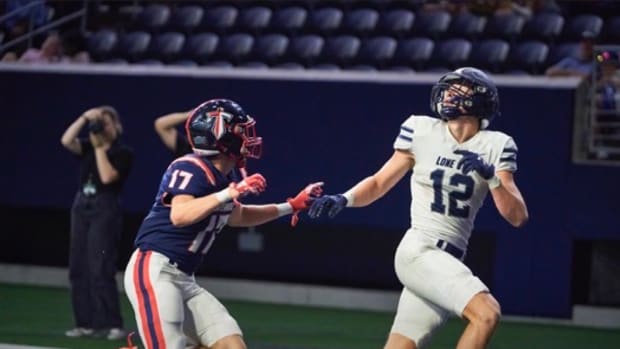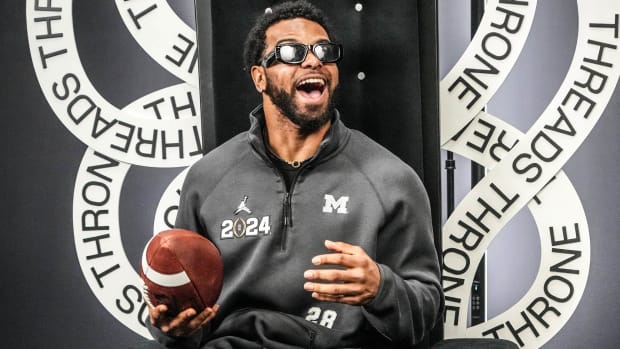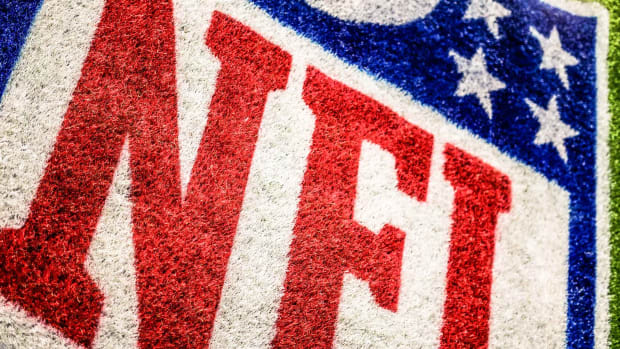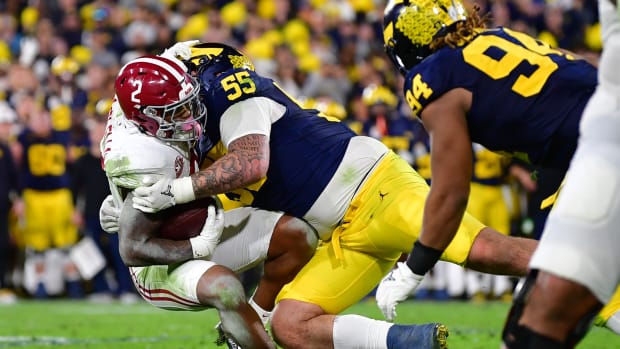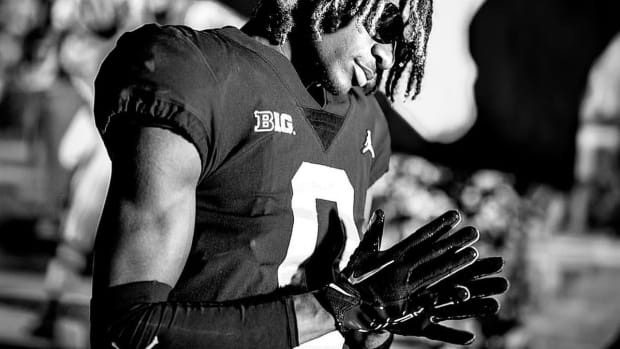For The Sake Of The Program, The “Michigan Man” Mentality Must End
It’s a phrase that dates back as early as Fielding Yost, but became more of a mantra when Bo Schembechler forcefully used it in 1989. Since that time, being a “Michigan Man” hasn’t just become a way of life in Ann Arbor, it’s essentially become a job requirement.
Ironically, Bo Schembechler wasn’t always a Michigan man. In fact, Schembechler’s roots are planted deep within the state of Ohio. The beloved Michigan man was born in Ohio, played football in the state of Ohio, and spent nearly half of his coaching career in the state of Ohio before finally making his way to Ann Arbor in 1969.
Following Schembechler’s retirement in 1989, Gary Moeller had assumed head coaching duties in Ann Arbor. Much like Schembechler, Moeller’s roots were also planted in the state of Ohio. Gary Moeller was a linebacker for the Buckeyes from 1961-1963 and began his coaching career as part of Schembechler’s staff at the University of Miami (Ohio) before following Bo to Ann Arbor.
During Schembechler’s tenure, a man by the name of Lloyd Carr had also joined the coaching staff in 1980. Unlike Schembechler and Moeller, Carr was a “Michigan Man” long before he began roaming the sidelines in Ann Arbor. Carr played college ball at Northern Michigan, spent seven years coaching high school football in the state of Michigan, and landed his first college coaching job at Eastern Michigan in 1976. After two brief stops in Illinois and West Virginia, Carr made his way back to the state of Michigan to join Schembechlers staff. On May 13th, 1995, Carr would become head coach at the University of Michigan after serving 16 seasons as part of the Michigan coaching staff.
Then came 2008.
In a vast departure from the previous 40 years, Michigan hired Rich Rodriguez - a man with zero ties to the state of Michigan. Rodriguez was West Virginia through and through, spending his college playing days for the Mountaineers as a defensive back from 1981-1984 and coaching in the state until 1997. Following brief stops at Tulane and Clemson, Rodriguez made his way back to West Virginia in 2001 where he would put together one of the most potent offensive attacks in all of college football. Rodriguez propelled the Mountaineers to multiple conference championships and BCS berth’s. Rodriguez would ultimately orchestrate the most successful stretch of Mountaineer football history during his time at West Virginia.
Unfortunately, that success didn’t translate well to Ann Arbor when Rodriguez took the head coaching job at Michigan in 2008. In his first season, the Wolverines would finish with a 3-9 record - the worst record in program history. That 3-9 record would also prevent the Wolverines from participating in a bowl game, ending college football’s longest streak of 33 straight years of participating in a bowl game. The remainder of Rodriguez’s tenure in Ann Arbor would be marred by losing records, players leaving the program, and NCAA rules violations.
As far as the Michigan fan base was concerned, the experiment of bringing in an “outsider” to coach the football program was to never be repeated again. Once Rodriguez’s time in Ann Arbor came to an end in 2010, the University of Michigan (and it’s fan base) was determined to bring in one of its own.
That came in the form of Brady Hoke.
Brady Hoke was everything that Michigan had traditionally succeeded with in years past. He was born in Ohio, played college football in Indiana, spent time coaching at both Western Michigan and Grand Valley State, spent a year coaching in Toledo (OH), and eventually became part of Lloyd Carr’s staff in Ann Arbor in 1995. Hoke was as much of a Michigan man as any. Unlike his predecessor, Hoke understood the rich tradition and expectation at a place like Michigan - due in large part to the fact that he spent eight years coaching in Ann Arbor alongside Carr. In his introductory press conference, Brady Hoke assured Michigan faithful he would have walked to Ann Arbor (from San Diego) to take over as head coach. He talked about the tradition and the greatness of Michigan football, he made clear that the expectation was to beat ‘Ohio’, and uttered that now infamous phrase, “this is Michigan, for god sakes”.
Brady Hoke would lead the Wolverines to an 11-win season in 2011 in his first year as head coach in Ann Arbor, providing many with the reassurance that a “Michigan Man” is the only one who can truly lead Michigan. The problem for Hoke (and for the fans) is that it was all downhill from there. The win totals for Hoke would decrease year after year for the next four years, ending with a 5-7 record for his final year in Ann Arbor. To his credit, Hoke was able to notch a win against the Buckeyes - which is still Michigan’s only win against that team down south during the last 16 years. Even so, Brady Hoke failed to meet the lofty expectations for a head coach at the University of Michigan. He would ultimately depart Ann Arbor in 2014 with an overall record of 31-20, a 1-3 record against the Buckeyes, and zero conference titles. Perhaps most notably, he was the first “Michigan Man” to fail in Ann Arbor.
That failure wasn’t enough to deter Michigan faithful from the belief that a “Michigan Man” was still the best man for the job. When it became clear that Jim Harbaugh was ready to come back home, many believed (myself included) that the “Michigan Man” philosophy was about to pay off in a very, very big way.
Jim Harbaugh was a California kid who became embraced by the midwest. He played college football at the University of Michigan under Bo Schembechler and It took just two seasons in Ann Arbor before Harbaugh would ultimately be named the starting quarterback by Schembechler in 1984. In just his first career start, Harbaugh led the Wolverines to victory over the No.1 Miami Hurricanes who had won the national title just a year earlier. Following a season ending injury in ‘84, Harbaugh would return in 1985 and deliver the ultimate victory to Wolverine faithful - a win over Ohio State. He would repeat it again in 1986, guaranteeing (and delivering) a win against Ohio State and leading the Wolverines to the Rose Bowl. That year, Harbaugh would be named the Big Ten Player of the Year and finish third in the Heisman voting. By the time Jim Harbaugh left Ann Arbor for the NFL draft, he did so as the program's all-time leading passer with 5,449 career passing yards.
After being taken in the first-round of the 1987 draft by the Chicago Bears, Harbaugh would spend the bulk of his playing years in the midwest and earn the title “Captain Comeback” for repeatedly leading his teams back in the fourth quarter. Following his NFL playing days, Harbaugh made a pivot to the coaching ranks where he quickly gained notoriety as a head coach. It began at the University of San Diego when he turned a struggling program into an 11 win program (twice). His success at the University of San Diego landed him the head coaching job at Stanford University. Once again, Harbaugh worked his coaching magic and turned the Stanford Cardinal into a legitimate PAC 12 threat. The year before Harbaugh arrived at Stanford, the Cardinal had finished with a 1-11 record. By the time Harbaugh departed Stanford for an NFL coaching job in 2011, he had propelled the Cardinal to a 12-1 record - the best record in Stanford football history.
Harbaugh would enjoy even more coaching success in the NFL. He accepted the head coaching job with the San Francisco 49ers in 201, taking over a team that had not had a winning season in eight years. In what was expected to be a rebuilding year in San Francisco, Harbaugh led the 49ers to a 13-3 record in just his first year - capturing the NFC West division title and reaching the playoffs for the first time since 2002. The following year, Harbaugh would do it again - this time taking the 49ers to the Superbowl where he would ultimately lose to his brother (John Harbaugh) and the Baltimore Ravens. Harbaugh continued to bring success to San Francisco, putting together a 12-4 record in his third season and becoming the first coach in 49ers history to reach the NFC Conference Championship game in their first three seasons.
Despite his on-field coaching success in San Francisco, Harbaugh’s relationship with team management began to sour. Without speculating what went into the souring of that relationship, Harbaugh would part ways with San Francisco after the 2014 season - the same year that Brady Hoke was departing Ann Arbor.
The college football gods could not have scripted a marriage any better than what was about to play out in Ann Arbor. Jim Harbaugh, a former Wolverine under Bo Schembechler, a successful college coach, a successful NFL coach, was about to return to Ann Arbor to rescue a once great program that was desperate for a winner.
That was then, this is now.
Six years into Harbaugh’s tenure in Ann Arbor, the vast majority of the Michigan fan base is ready to see him go. The coaching success that Jim Harbaugh has demonstrated at every level has failed to fully materialize in Ann Arbor. While nine and ten win seasons are the norm under Harbaugh, so is losing to Ohio State every single year. What’s worse is that a program that should be “reloading” appears to be regressing. Harbaugh’s Wolverines have started the 2020 season with a 1-2 record, the first time that has occurred since 2008 (Rich Rodriguez’s first year in Ann Arbor). Those two early season losses have come against Michigan State, a team that is clearly in a rebuilding year with a first year head coach, and Indiana, an ascending program that snapped a 24 game (33 year) losing streak to the Wolverines this past weekend.
In a crucial year for Jim Harbaugh and his future in Ann Arbor, Michigan looks like a team that could very well be on its way to a losing record for the 2020 season.
As the answer for Harbaugh’s inevitable replacement remains unclear, one thing seems crystal clear: Michigan must abandon the “Michigan Man” mentality for the sake of the program.
If you’ve made it this far into the article, a couple of things should be abundantly clear. The first being that I may have consumed far too much caffeine before writing it. The second being that all of the great “Michigan Men” of years past weren’t created in some underground lab in Ann Arbor. Fritz Crisler was born in Illinois and coached for Chicago, Minnesota, and Princeton before making his way to Ann Arbor. Michigan’s ultimate “Michigan Man”, Bo Schembechler, arrived in Ann Arbor in 1969 with zero connection to Ann Arbor and Michigan. Ironically, Schembechlers only ties to Michigan happened to be his experience while on the opposing sideline as an assistant coach for the Buckeyes. Gary Moeller, who took over after Schembechlers retirement, played college football for the Ohio State Buckeyes and coached alongside Schembechler in Ohio.
Outside of Lloyd Carr, much of Michigan’s success throughout history was created by individuals who were exceptions to the “Michigan Man” rule.
If and when Michigan is prepared to replace Jim Harbaugh at the helm, we must all be ready and willing to embrace an outsider in Ann Arbor. Having a history with Michigan is far less important than having a clear understanding of today’s college game and a demonstrated track record of being able to succeed within it.
Michigan doesn’t need one of its own, it just needs a winner.
